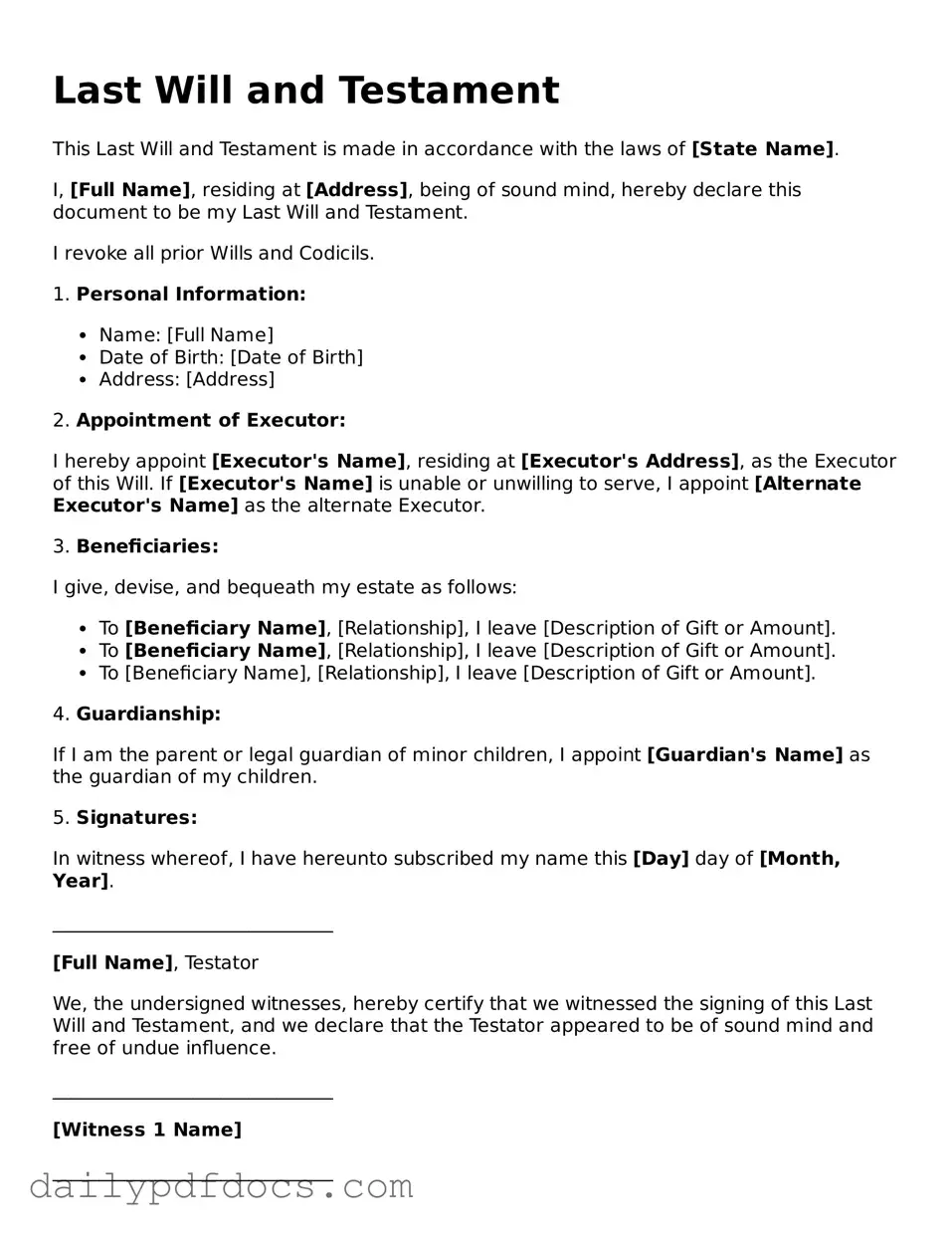Last Will and Testament
This Last Will and Testament is made in accordance with the laws of [State Name].
I, [Full Name], residing at [Address], being of sound mind, hereby declare this document to be my Last Will and Testament.
I revoke all prior Wills and Codicils.
1. Personal Information:
- Name: [Full Name]
- Date of Birth: [Date of Birth]
- Address: [Address]
2. Appointment of Executor:
I hereby appoint [Executor's Name], residing at [Executor's Address], as the Executor of this Will. If [Executor's Name] is unable or unwilling to serve, I appoint [Alternate Executor's Name] as the alternate Executor.
3. Beneficiaries:
I give, devise, and bequeath my estate as follows:
- To [Beneficiary Name], [Relationship], I leave [Description of Gift or Amount].
- To [Beneficiary Name], [Relationship], I leave [Description of Gift or Amount].
- To [Beneficiary Name], [Relationship], I leave [Description of Gift or Amount].
4. Guardianship:
If I am the parent or legal guardian of minor children, I appoint [Guardian's Name] as the guardian of my children.
5. Signatures:
In witness whereof, I have hereunto subscribed my name this [Day] day of [Month, Year].
______________________________
[Full Name], Testator
We, the undersigned witnesses, hereby certify that we witnessed the signing of this Last Will and Testament, and we declare that the Testator appeared to be of sound mind and free of undue influence.
______________________________
[Witness 1 Name]
______________________________
[Witness 2 Name]
